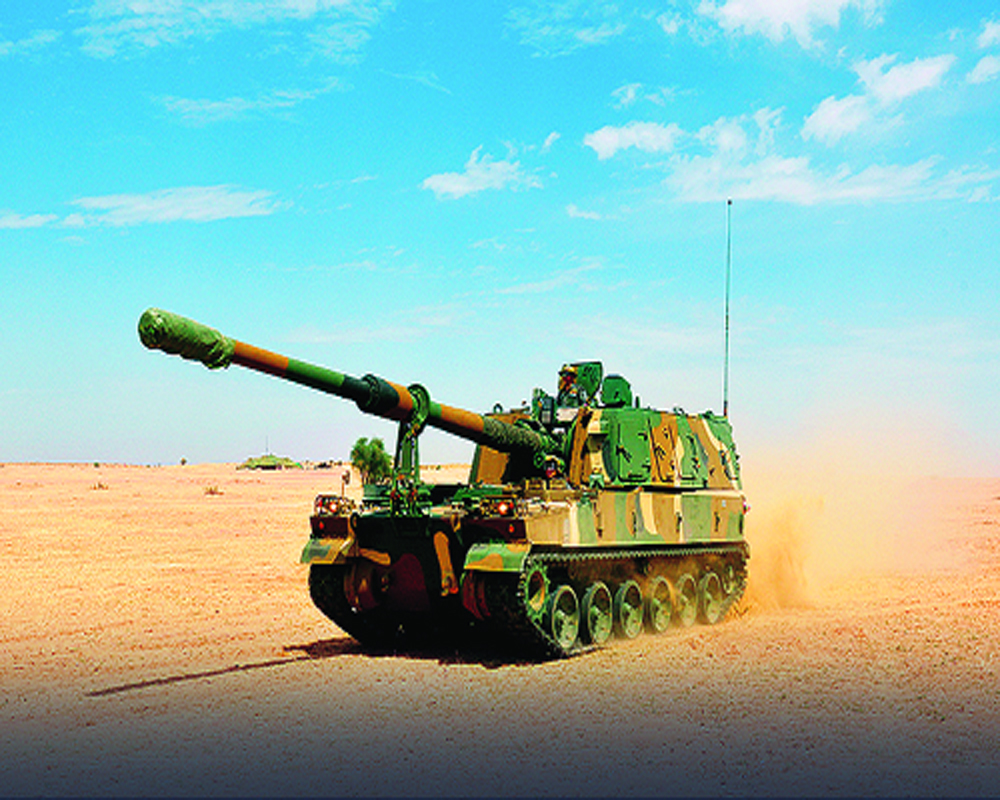The corporatisation of the Ordnance Factory Board has to be seen in the overall context of improving India's military industry capability
India has to make its armed forced self-reliant — ‘Aatmanirbhar’. The Army accounts for more than half of the total defence budget of India, with most of the expenditure going into the maintenance of cantonments, salaries and pensions, instead of critical arms and ammunition.
On February 1, 2020, Finance Minister Nirmala Sitharaman earmarked Rs 4,71,378 crore for the Ministry of Defence (MoD). Of the total allocation, Rs 3,23,053 crore was provided for the Defence Services Estimates (DSE) and Defence Research and Development Organisation (DRDO). The balance allocation is distributed between defence pensions and MoD (Civil). Representing a growth of 9.4 per cent, MoD's overall allocation translates into an increase of Rs 40,367 crore. This raises the question, how would this increase affect India's defence and modernisation in particular?
This budget is just 1.7 per cent of the GDP, which is just not sufficient for the modernisation of defence forces keeping in view the threat perception from China and Pakistan.
India emerged as the second-largest importer of arms transferred between 2016-20, with a share of 9.5 per cent of global arms imports. To make India self-reliant, the Ordnance Factory Board (OFB) has been split into seven government-owned corporate entities to help improveself-reliance in defence preparedness. Business in the seven new entities started from October 1, 2021. These new companies are: Troop Comforts Limited (TCL); Yantra India Limited (YIL); Gliders India Limited (GIL); India Optel Limited (IOL); Advanced Weapons and Equipment India Limited (AWE India); and Armoured Vehicles Nigam Limited (AVANI).
The companies now have an order book of Rs 65,000 crore. These orders were already in the pipeline and were just shifted to the new entities. These companies have complete functional autonomy and the interests of the employees are fully protected.
According to Defence Minister Raj Nath Singh, “It is to transform the Ordnance Factories to improve expertise in product range; profitable and productive assets; ensure self-reliance; enhance cost effectiveness and improve quality and increase competitiveness.”
The Centre, in May 2020, had announced increasing the FDI limit from 49 per cent to 74 per cent under the automatic route in the defence sector. The government has been emphasising boosting indigenous defence manufacturing. The Ministry has set a goal of a turnover of Rs 1.75 lakh crore in defence manufacturing by 2025 that included an export target of Rs 35,000 crore worth of military hardware.
Despite these initiatives, India's military industry capability shows a sorry picture and the private sector is still not being treated as a partner in India's quest for higher self-reliance. A GE 404 engine from the US powers the much-hyped indigenous Light Combat Aircraft (LCA), while the radar is sourced from Israel. The Kaveri engine development by the Gas Turbine Research Establishment (GTRE) has been an unmitigated disaster. German MTU engines power the Main Battle Tank (MBT), the showpiece indigenous tank. Despite the hike in FDI, the inflow has only been $300 million from April to September 2020; largely due to the number of caveats for allowing 76 per cent FDI.
The Kalam Committee assessed our Self Reliance Index (SRI) in 1993 as 30 per cent, with a road map to increase it to 70 per cent in a decade's time. The committee had identified a number of critical subsystems like the focal plane array, passive seekers, stealth, AESA radar, RLG and carbon fibres where India's design and development quality needs to be ramped up. Weapons, propulsion and sensors remain the main bugbears of India's design capability in the DRDO and India's SRI has not inched forward.
Technology transfer has been India's major policy mosaic to build major systems and platforms since 1963 (in the aftermath of the MiG-21 aircraft). HAL has been producing Sukhoi Su-30 on the basis of technology transfer documents from Russia. Similar is the story of the T90 produced in the Avadi tank factory.
The major problem afflicting the OFB is not the lack of autonomy or accountability but the wherewithal to improve capability. Its corporatisation has to be seen in the overall context of improving India's military industry capability, self-reliance quotient, design capability in critical systems and quality, time and cost-effectiveness and involvement of private players in defence manufacturing as partners in tandem with OEMs and design houses.
(The writer is former Senior Professor, International Trade and Member, Vivekananda International Foundation. The views expressed are personal.)


























